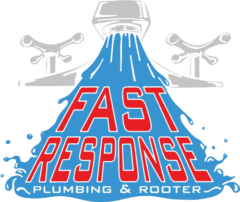Identifying Water Heater Issues

We need to pay close attention to signs like unusual noises, leaks, and inconsistent water temperatures. These can signal problems with our water heaters. Discoloration and sediment buildup in the water may also indicate trouble.
Unusual Noises and Leaks
Strange sounds like popping or whining often point to sediment buildup at the bottom of our hot water heater. Over time, these minerals and debris settle and harden on the tank bottom, causing these noises. Regular flushing through the clean-out can help.
Leaking water is a red flag too. It might be a result of a cracked tank or loose connections. We should check for any wet spots around the heater and check insulation for dampness.
Inconsistent Water Temperatures
If our shower starts off hot but turns cold quickly, it may indicate issues. A broken thermostat or heating element inside our water heater can cause this. Checking these components can help restore regular temperatures.
Sometimes, fluctuating temperatures point to problems with the dip tube. This component directs cold water to the bottom of the tank. If it’s damaged, we might need a replacement.
Discoloration and Sediment in Water
Rusty or brown water usually means corrosion. This might force us to change our water heater. Sediment in the water can clog pipes and reduce efficiency. Regular maintenance, including flushing, can prevent these issues.
Clear water problems might hint at needed upgrades or repairs. We must not ignore signs of corrosion or debris. Paying attention early can prevent larger problems.
Assessing Emergency Situations

When dealing with water heater emergencies, it’s crucial to spot signs like gas odors, water leaks, and electrical troubles. Recognizing these issues early helps us react swiftly and safely.
Gas Smell and Carbon Monoxide Dangers
A strong smell of gas near the hot water heater signals a possible gas leak. We must evacuate the area immediately and contact emergency services.
Carbon monoxide is odorless and dangerous. Detectors are essential for safety. Symptoms like headaches or dizziness indicate its presence. Regular inspections by professionals ensure everything is functioning correctly.
Water Pooling and Major Leaks
Water pooling around the heater can indicate a major leak. Leaks can cause severe damage to flooring and walls.
We should look for watermarks or dampness. A sudden drop in water temperature might also hint at issues. It’s vital to shut off the water supply and call a plumber right away to prevent further damage.
Electrical Hazards and Circuit Breaker Issues
Electrical problems pose serious risks. If the circuit breaker trips often, it might be a sign of trouble with the water heater’s electrical system. We must avoid resetting the breaker repeatedly.
Look for scorch marks or a burning smell. Damaged wires or connectors can lead to fires. It’s essential to contact an electrician to inspect and fix any electrical faults safely.
Maintenance to Prevent Emergencies

To keep our hot water heater running smoothly and prevent emergencies, regular maintenance is crucial. By scheduling routine inspections, updating insulation, and performing clean-outs, we can ensure efficiency and longevity.
Routine Inspections and Service Intervals
It’s important to schedule regular inspections for our water heater. Twice yearly is a recommended frequency to check for leaks, corrosion, and other problems. This helps us catch issues before they escalate. Hiring a professional technician ensures that necessary adjustments or repairs are handled correctly.
Using a service interval checklist is helpful. This checklist should include tasks like checking the pressure relief valve and examining the anode rod. Both are vital components that can affect our water heater’s performance and safety.
Updating Insulation for Efficiency
Proper insulation is key for improving efficiency and lowering energy bills. We can start by insulating the pipes connected to the water heater. This helps reduce heat loss as hot water travels through the system.
For the tank itself, wrapping it with a water heater blanket can be effective. This blanket should fit snugly, covering the sides and top but not blocking important elements like the thermostat or burner. Adding insulation keeps the hot water heater from overworking, which extends its lifespan.
Water Heater Clean-Out Procedures
Performing regular clean-outs is necessary to prevent sediment build-up. We should flush the tank every six months to remove accumulated minerals and debris. This process involves shutting off the power or gas and draining the tank through a connected hose.
Cleaning the tank reduces strain on the heating elements and improves efficiency. Additionally, by ensuring there is no sediment at the bottom, we lessen the chance of damaging the tank lining. Consistent clean-outs keep our hot water heater operating at its best.
